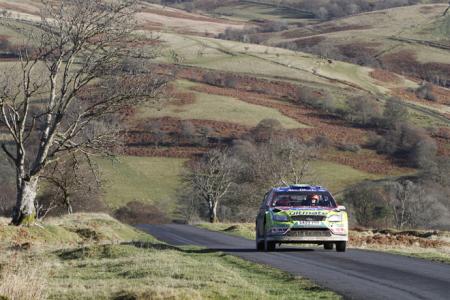Britain’s World Rally Championship counter has been a qualifying round of the series every year since the WRC was established in 1973. Its origins date back to 1932 and, for many years, it was known as the RAC Rally in deference to the organiser, the Royal Automobile Club, before the advent of commercial sponsorship brought about a change of name.
While the event used to roam around England, Scotland and Wales, making it a test of endurance rather than a demonstration of all-out speed, since 2000 the action has been contained in south Wales prior to the inclusion of stages further north into mid-Wales in 2008.
Indeed, last year’s event expanded even further afield in Wales and took in the famous and ultra-fast Radnor stage, which is less than one hour by road from Birmingham, Britain’s second largest city.
There was also a move towards a mixed surface format in 2010 with some asphalt sections creeping in to the predominantly gravel runs, while the Cardiff Bay special stage ran entirely on asphalt roads close to the main service area in the Welsh capital.
But it’s the gravel-based forest stages that Wales Rally GB is most famous for. Fast and undulating, the roads are often made slippery by rainfall. Snow and ice are not uncommon.
As well as bringing the curtain down on the main WRC for 2011, Wales Rally GB will stage the final round of the WRC Academy series, for identical Ford Fiesta R2s, and the Production Car World Rally Championship.
New for 2011
The format of this year’s world championship finale has undergone significant changes with a route starting in the seaside town of Llandudno in the north of Wales and finishing in the capital Cardiff in the south three days later.
Action gets underway on Thursday 10 November with two runs over the Great Orme all-asphalt toll road, not used on the event since 1981, before a single stage in Clocaenog Forest, which last appeared on the Rally GB itinerary in 1996.
Friday’s stages in the forests of Dyfi and Dyfnant have not been used since 1996 and 1997 respectively. Although Saturday’s stages in Hafren, Sweet Lamb and Myherin are unchanged from 2010, the Halfway, Crychan and Monument tests on Sunday will generally run in a reverse direction, with Halfway and Crychan again featuring a combination of asphalt and gravel.
The permanent service park will be housed in the Royal Welsh Showground in Builth Wells, where shakedown will also take place. The rally headquarters will continue to be based in the Wales Millennium Centre in Cardiff.


